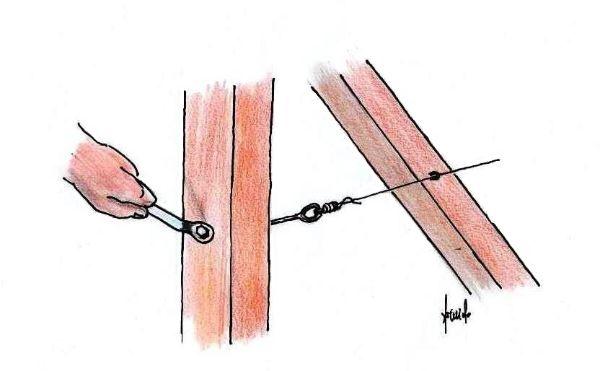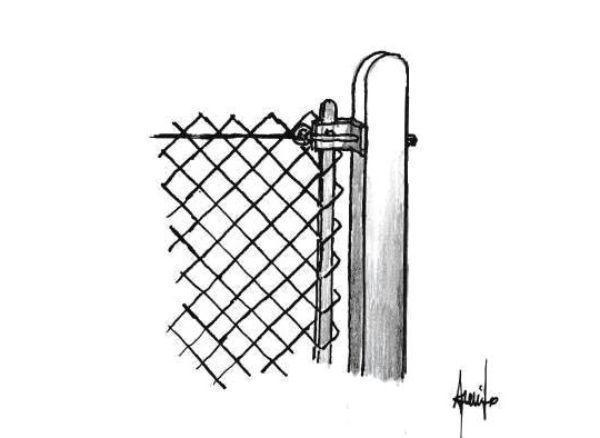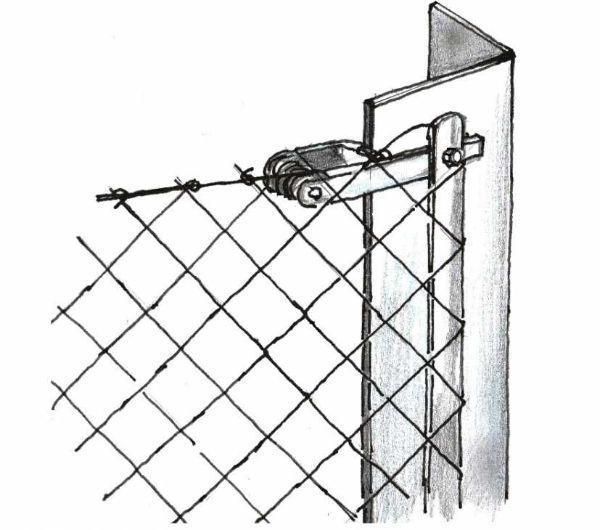Wire mesh fence: constructive ideas
Post from EditorialsWire mesh fence: constructive ideas represented with drawings, to realize them in DIY with wooden poles, concrete or metal angle bracket.
The wire mesh fences are practical and low cost
The wire mesh fences are the easiest and cheapest way to define large spaces in rural areas, forest lands, vineyards, playgrounds, car parks and extensive tracts of land in general.
Nothing prevents, however, to use this primordial partition method also in purely residential contexts, such as the gardens of terraced houses or more modest country homes equipped with kitchen garden and orchard in front, and so on.
The undoubted advantage of a wire mesh fence is to not obstruct the view of the surrounding landscape, allowing also the right visibility to the neighborhood.
The assembly is easily achievable also in DIY mode; the wire mesh can be fastened to wooden posts or pillars of concrete or even, on metal bars.
Design of wire mesh fences with wooden stakes
In the drawing below I illustrate the end portion of a typical wire mesh fence fixed to wood poles.
Proceed with the installation of the support poles, arranged according to center distances of 1.5 or 2 meters between them, not exceeding the maximum recommended security, of about 3 meters.
To confer a strong stability to the entire self-supporting construction is necessary to fix, especially to the end poles, the additional wooden pole arranged diagonally, in such a way as to form a sturdy structural angle.
These inclined poles are called beams, as they are attached to the vertical pillar precisely by means of a tip: in this way they act as a support and bracing, increasing the resistance of the fence itself to the wind and any accidental impacts by vehicles or animals.
If the fences are particularly long, these beams should be applied also on the intermediate poles at selected intervals according to the shape and perimeter to the functionality of the structure itself, taking care to strengthen further at the level of the corners, which are more exposed.
The laying of the wire mesh must be carried out simply by fixing all the meshes to the pole, with the so-called U-shaped staples, ie the typical curved double-headed nails.
The mesh must be supported and literally pulled by long horizontal metal taut cables, distinguishable in my representation: a cable on the top and another at about 15 cm from the ground.
For more than a meter tall structures, we must add a third taut cable at an intermediate position between the other two.
Every 30 cm, you must fix the mesh with tight cables, with some galvanized iron wire.
Mounting tight cables to support the wire mesh
The long longitudinal support cables are put in tension thanks to robust eye bolts screwed into the terminal poles, as I highlighted in the underlying representation.
With the wood drill top make some through holes with a diameter of 1 cm in the vertical poles.
Put the bolts in the holes, screwing nuts and washers and letting out a part of the thread in such a way as to allow then a rotation movement.
Insert the ends of the cables into the eyelets of the bolts and twist them using a pliers.
Once attached to one end, the cables are pulled along the fence, stopping them at intermediate poles and struts through the U-shaped nails; in this step take care to leave enough space at the level of tacks so that the cables can move easily and adapt to the shape of the structure, during straining.
Cut the cables and twist them to the eyelets the bolts located at the opposite end of the fence; Now you can strain the cables by tightening the nuts with a wrench.
In the case of very long fences, it should be added, along the course of each horizontal cable, a tensioner namely a bolt double eyelet to tighten it more by simply rotating it on itself through a common screwdriver; you can check the wide choise of different shapes and size of such steel turnbuckles on Amazon.com.
Wire mesh with concrete pillars
In the next drawing I represented the distinctive characteristics of a wire mesh fence attached to concrete pillars. 
In this case, the taut cables are to be secured to the concrete poles, using bolts and metal brackets; in laying the mesh take care to bolt a tight vertical bar on the brackets.
The horizontal cables should be also linked to the intermediate pillars using galvanized wire, to be passed through the holes.
Wire mesh with metal angle bracket
The metal angle bracket poles for wire mesh fences are equipped with specific winding arms, to which are fixed the vertical support bars and through which are tightened the horizontal cables.
During installation, you have to run the longitudinal cables through the pre-drilled holes in the intermediate poles.
There can be several practical methods to mark the boundaries of the property and still get excellent results in terms of aesthetics and functionality, albeit with a small fee and good qualities of dexterity.
To get advice aimed at the development of rational interior and exterior spaces of the house, it is available online our exclusive service freehand design, through which you can deploy the spaces according to new ideas that enable an ergonomic and harmonious living conditions of any housing area.
79806 REGISTERED USERS










